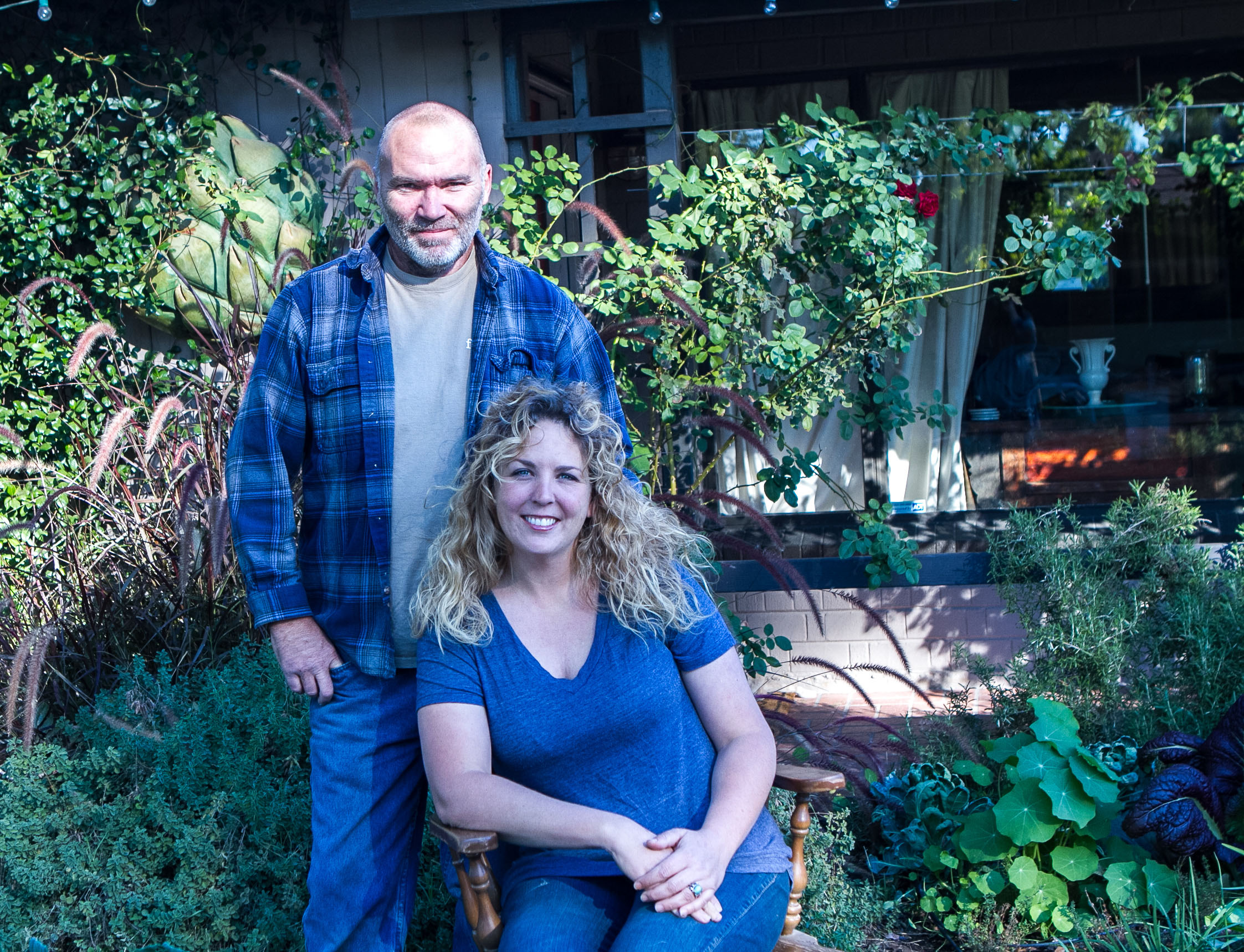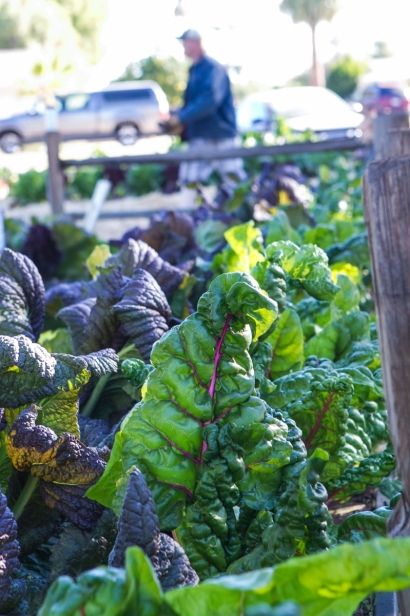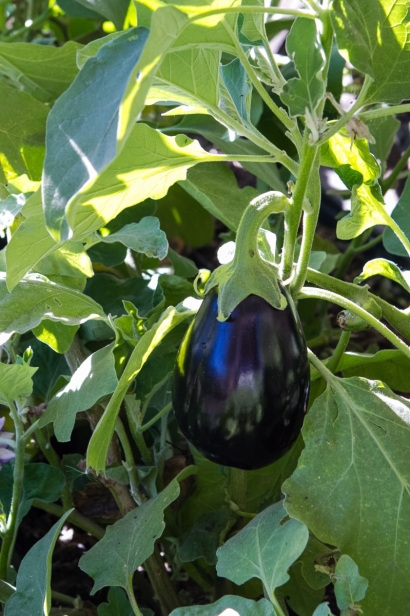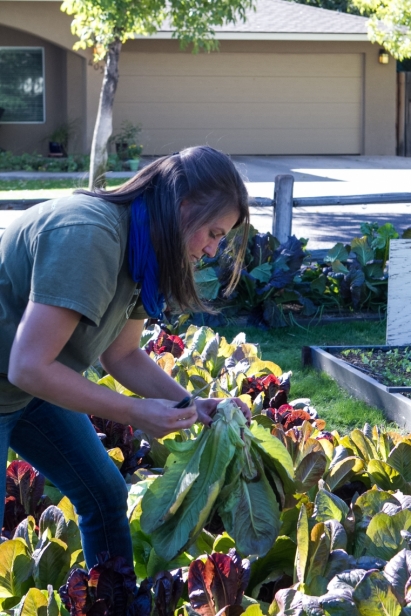Bye Bye Lawn, Hello Micro-Farm
The home base of Farmyard is a normal-sized urban property in the historic Arcadia neighborhood in central Phoenix. At first quick glance it doesn’t look much different from its neighbors. Then you notice the leafy greens in the front yard, and the raised beds, and the discreet sign and you begin to wonder “what’s going on here?”
A relatively recent addition to the Phoenix gardening scene, the Farmyard venture is the brainchild of urban gardening advocates and sisters Rebecca and Sarah Kidwell. Since 2009, the sisters, along with Rebecca’s husband Troy, have transformed nearly 500 properties in the Valley, installing and maintaining organic and sustainable home gardens for grateful clients. Their system takes the guesswork out of the make-it-or-break-it considerations like soil composition and an effective, efficient watering system.
The Kidwells are Arizona natives, growing up in Scottsdale “when Shea was a two-lane dirt road. I saw all of the development happen,” says Rebecca.
“We did have a small vegetable garden growing up. Every spring we’d work in the garden but it wasn’t something we depended on.” she says. “Later, in each apartment or house, I’d always have a garden.”
With a background in landscaping and construction, Troy’s skills came in handy as the couple transformed their standard-issue suburban Phoenix lot into an efficient and productive urban farm.
“Troy and I dreamed of a larger garden and we looked at front yard and said ‘Wow, that’s a lot of grass.’”
Beds were excavated six inches below the soil and then raised six inches above with simple and tidy wood boards. The excavated soil created berms in another underused part of the yard that didn’t even grow grass well. Fresh soil and compost, rich with the nutrients and microbes that support healthy and vigorous plant growth, replaced the native soil. Soon, a vigorous garden was growing for all to see.
Once you transition your front yard to a full-on farm, people are bound to take notice. And notice they did!
“We had quite a few people stop, ask questions and look around,” says Rebecca, “so we decided at that point to transform it into a business. We put up the website in 2009 and it went from there.”
“We put up a flier over at Baker’s,” the much loved and recently closed nursery just blocks from the property. “They would send people over telling them that if they’re into gardening, they should go around the corner and check us out.”
A big break came when a writer from Sunset magazine took notice of the transformation and covered the startup venture for the magazine. Soon after, they were featured in Phoenix Home and Garden and business began to boom.
Perhaps the biggest challenge to gardening in the desert is getting the water right. “Everything is drip irrigation,” she says. “It’s very efficient. A lot of people think that because we are in the flood irrigation plane that we take advantage of the cheap water.”
“We don’t flood for a number of reasons, including all the weed seeds. Also, because Arcadia was a citrus grove, the flood irrigation system is set up for fruit trees—very helpful if you’re growing them, but for our beds we want to be able to regulate time and water.”
“Four minutes, twice a day … even in the hottest months,” she insists. Though it is hard to imagine, when using the hyper-efficient drip irrigation, which delivers water directly to the root area of each plant and is not wasted on the nearby soil, it is enough to keep plants going even in the hottest months, provided they receive adequate shade.
And then there is the matter of yield. Many gardens in this climate begin with high hopes and end in failure a few months later as temperatures soar. Planting at the right time for the climate is critical.
“Our clients are shocked at the amount of produce they can get out of a small space: a two- by two-foot patch of mesclun mix, that’s a salad four nights a week for a family of four, November through end of January.”
In February, the soil is amended and a new crop of spring vegetables is planted from seeds or starts.
The two main planting seasons are spring and fall. A summer season bridges the gap when melons, squashes and cucumbers are among the few plants that will grow. “A lot of people go out of town and want nothing to do with it in summer,” she says.
Gardeners used to working the soil in other parts of the country can find the highly alkaline desert soil to be quite daunting. In other parts of the country, deciduous trees and winter freezes have been adding a natural layer of organic matter to soils for millennia, creating much richer soils.
“If you’re doing in-ground beds, our native soil is so naturally alkaline that it takes a year or year and a half to get that soil pH to a range that will support growth,” she says. “Not to mention the clay and sand that we have.”
“We are an instant gratification society. With the raised beds, you get success that same season.”
She advises starting fresh each season. Things that limp along over the summer never seem to come back with the same vigor after the stress of 115°.
“Everyone has a problem with pulling things out,” she says. “You’ve nurtured it and it’s hard to pull out that plant, to go back through when the beets and carrots grow in close together. But you need to thin to the strongest one. With limited time and limited space, you have to do it if you want the most production.”
As for her clients, they are parents who do it so their kids can have an understanding of where their food comes from. They are health care professionals and those who are battling diseases and who understand how important fresh-grown food is in healing from diseases naturally.
“The nutritional value between the stuff you find in the store is very different from what you grow yourself, not to mention the taste,” Troy notes. “The nutrients come from the soil and when you get that right, things flourish.”
“The other thing different is that people may be used to seeing pristine vegetables from the market, but when you use no pesticides, there will be the occasional hole in a leaf,” he says. “That happens naturally, especially in Arizona where bugs don’t die off.”
Though the garden will basically care for itself with watering done by timer, it helps to spend a few minutes each day walking through the garden and taking notice of the crops.
“A lot of clients will have a glass of wine at the end of the day and meander.,” Rebecca notes. “They notice if there is a new caterpillar hole or if this leaf or that plant looks off. It’s not as much of a chore. The garden becomes a conversation piece and a part of your life.”
The one thing people may not expect is the influx of vegetables. The farm’s tomato plants average 15 pounds of fruit per plant. “They’re so excited to grow it, but then they have to know what to do with it,” says Rebecca.
With a background in catering, Rebecca can help with this challenge as well. “Our clients are having to go back to these old arts of preservation—not just cooking but also caning, pickling, freezing that 45-pound tomato harvest.”
That’s quite a lot of bounty from what was once a water-sucking front lawn or barren side lot.
“In the beginning, people said ‘You hillbillies, what are you doing? That should be in the backyard,” Troy says with a smile, “but now we’ve actually had people who have bought in this neighborhood because of what’s going on in agriculture.”
“It can be done,” he says. “We’re doing it on a smaller scale, but it shows what’s possible.”








